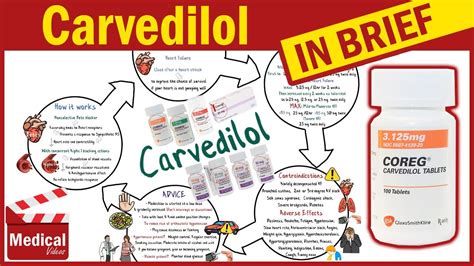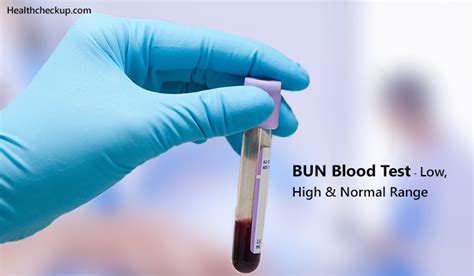Carvedilol is a medication that belongs to a class of drugs known as beta-blockers, which are primarily used to treat various cardiovascular conditions. The primary mechanism of action of carvedilol involves blocking the effects of the hormone epinephrine, also known as adrenaline, and reducing the heart’s workload. This action helps to lower blood pressure, reduce the heart rate, and lessen the force of the heart’s contractions.
One of the main uses of carvedilol is in the management of high blood pressure (hypertension). By lowering blood pressure, carvedilol helps reduce the risk of heart attack, stroke, and kidney damage. The medication achieves this by relaxing blood vessels, making it easier for the heart to pump blood, and improving blood flow.
Another significant application of carvedilol is in the treatment of heart failure. Heart failure is a condition where the heart is unable to pump enough blood to meet the body’s needs. Carvedilol has been shown to improve survival and reduce hospitalizations in patients with heart failure by enhancing the heart’s pumping efficiency and reducing the progression of the disease.
Carvedilol is also used to treat patients who have had a heart attack (myocardial infarction). By reducing the workload on the heart, carvedilol can help prevent future heart attacks and improve survival rates in these patients.
In addition to its use in treating these primary conditions, carvedilol may be prescribed for left ventricular dysfunction, a condition where the left side of the heart, which is responsible for pumping blood throughout the body, does not function properly. Carvedilol can help improve the heart’s pumping function and reduce symptoms associated with left ventricular dysfunction.
Further, carvedilol has been explored for its potential benefits in managing angina pectoris, a condition characterized by chest pain or discomfort due to reduced blood flow to the heart muscle. By reducing the heart rate and the force of contraction, carvedilol can decrease the oxygen demand of the heart, thereby alleviating angina symptoms.
It is essential to note that while carvedilol is effective in treating various cardiovascular conditions, it should only be used under the guidance of a healthcare provider. The medication can have side effects and interact with other drugs, so monitoring and adjustments to the treatment plan may be necessary.
How Carvedilol Works
Carvedilol’s effectiveness in treating cardiovascular diseases can be attributed to its unique pharmacological properties. It is a non-selective beta-blocker with alpha-1 blocking activity, which means it can block both beta and alpha-1 receptors in the body. This dual action contributes to its ability to lower blood pressure and improve heart function more effectively than some other beta-blockers.
Beta-blockade: By blocking beta-1 receptors in the heart, carvedilol reduces heart rate, the force of contraction, and the heart’s oxygen demand. This action is particularly beneficial in conditions like hypertension, heart failure, and after a heart attack.
Alpha-1 blockade: Carvedilol’s ability to block alpha-1 receptors leads to the dilation of blood vessels, further contributing to the reduction in blood pressure and improvement in heart function. This vasodilatory effect is unique among beta-blockers and contributes to carvedilol’s effectiveness in treating heart failure.
Side Effects and Considerations
While carvedilol is generally well-tolerated, it can cause side effects, including dizziness, fatigue, and shortness of breath. Patients should report any side effects to their healthcare provider, as adjustments to the dosage or switching to a different medication may be necessary.
Given its effects on blood pressure and heart rate, carvedilol may not be suitable for everyone, particularly those with certain medical conditions such as asthma, severe peripheral artery disease, or those who are prone to bronchospasm. It is crucial for patients to discuss their medical history and any concerns with their healthcare provider before starting treatment with carvedilol.
Conclusion
Carvedilol is a versatile and effective medication for the management of various cardiovascular conditions, including high blood pressure, heart failure, and post-myocardial infarction. Its unique mechanism of action, combining beta and alpha-1 blockade, offers benefits in reducing blood pressure, improving heart function, and enhancing survival in patients with heart failure. As with any medication, it is essential to use carvedilol under medical supervision, monitor for side effects, and adjust the treatment plan as needed to ensure the best possible outcomes.
What are the primary uses of carvedilol?
+Carvedilol is primarily used to treat high blood pressure, heart failure, and to improve survival after a heart attack. It may also be used for left ventricular dysfunction and angina pectoris.
How does carvedilol work?
+Carvedilol works by blocking beta and alpha-1 receptors, which reduces heart rate, the force of heart contractions, and blood pressure. This dual action helps in improving heart function and reducing the risk of future heart problems.
What are the common side effects of carvedilol?
+Common side effects of carvedilol include dizziness, fatigue, and shortness of breath. Patients should report any side effects to their healthcare provider for appropriate management.
In conclusion, carvedilol is a valuable medication in the management of cardiovascular diseases, offering a unique combination of benefits that can improve patient outcomes. Its use, however, should be tailored to the individual patient’s needs and medical history, highlighting the importance of personalized medicine in achieving the best possible results.



